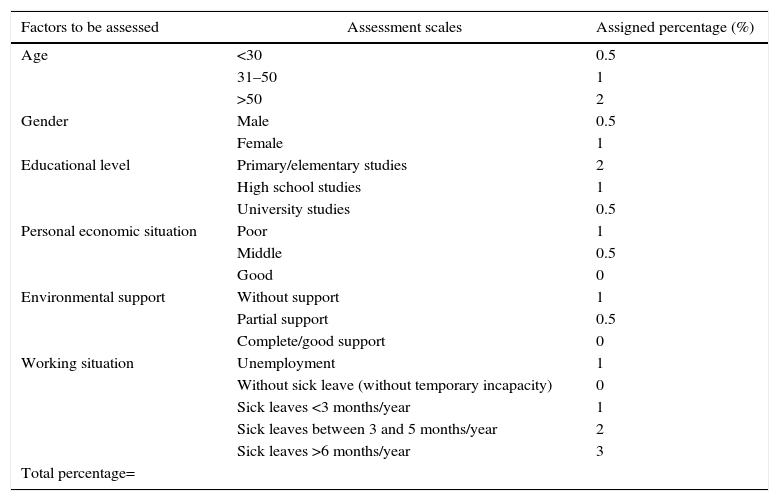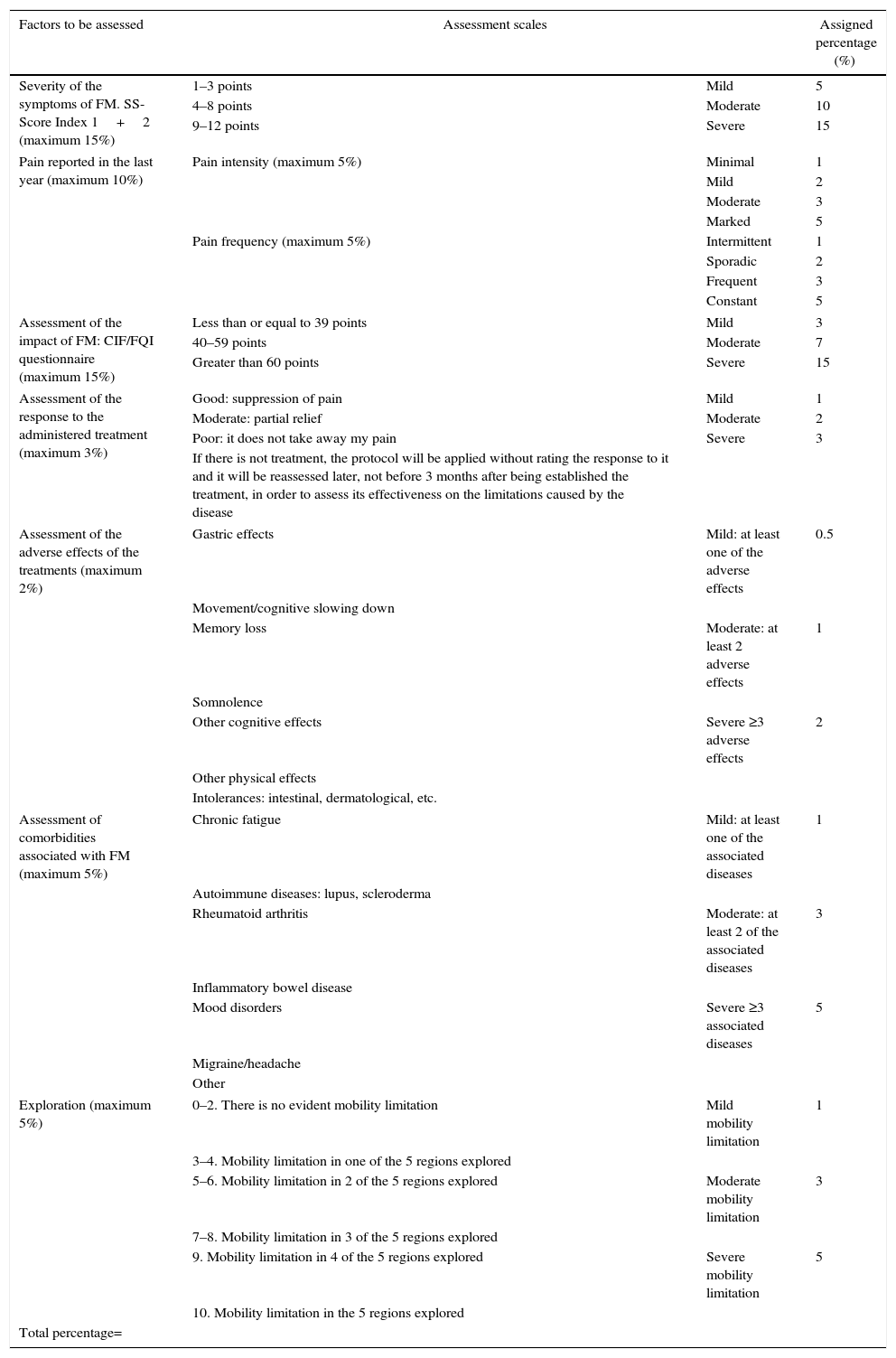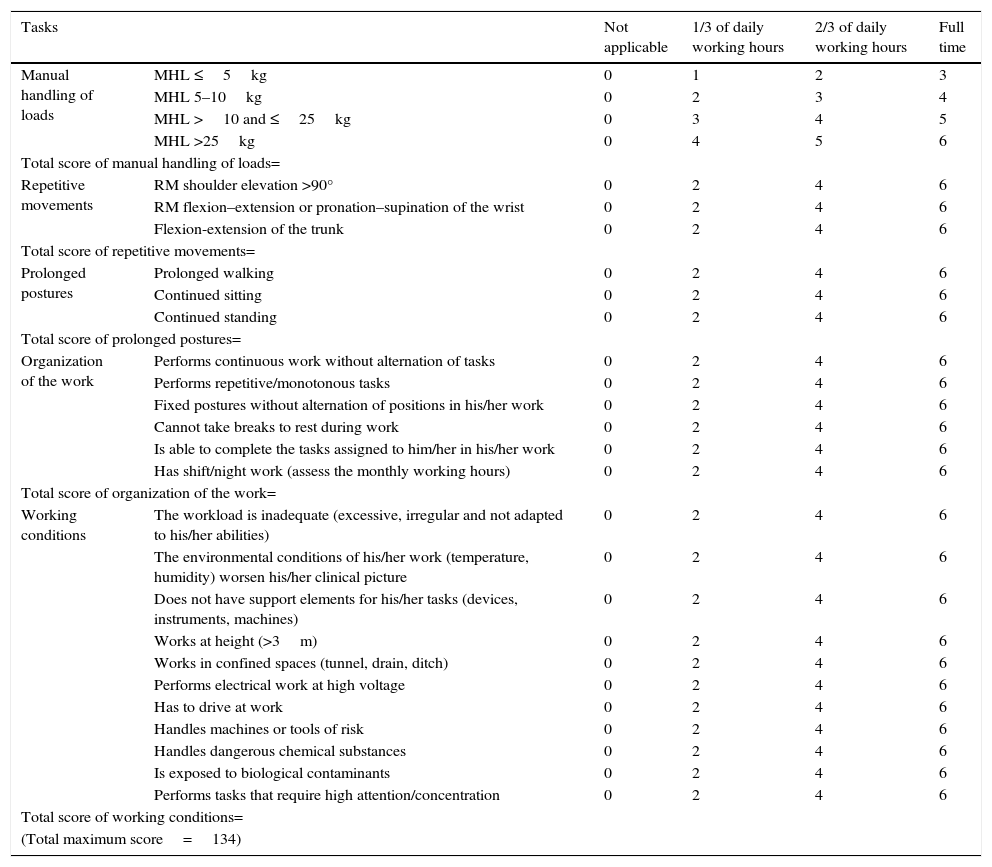Fibromyalgia syndrome is characterized by chronic pain associated with non-specific somatic symptoms, and has a personal, social, occupational, and economic impact. The assessment is performed independently, by analyzing the clinical aspects, severity, therapies, and their effectiveness, as well as the impact on daily life activities and its effect on employment. The FM-Check tool is a subjective scale that can be helpful in jointly assessing all these aspects, and provide professional support in monitoring the patient, as well as contribute to a multidisciplinary approach.
MethodTo develop FM-Check is developed by starting with the clinical history in which the variables that are going to be used are defined, and grouped into 4 blocks to which a percentage limitation rate is assigned for each variable and each block. An overall percentage limitation is then calculated for the activities in each person.
ResultsThe distribution of assigned percentages was: a maximum of 10% for personal appearance, 55% for clinical-therapeutic aspects, 24% for work aspects, and 10% for impact on everyday life. The limitation levels were classified according to the overall percentage obtained after assessing the patient; grade 1: an overall percentage <20%, grade 2: 20–40%, grade 3: 41–70%, and grade 4: >70%.
ConclusionFM-Check aims to make it easier for the clinician to monitor the patient and making medical-therapeutic decisions after an overall assessment of the limitation of the fibromyalgia patient. This achieved by following a unified methodology that can compare individual developmental outcomes, as well as for conducting joint epidemiological studies.
El síndrome fibromiálgico se caracteriza por dolor crónico asociado a sintomatología somática no específica y con las limitaciones asociadas a su impacto personal, social, laboral y económico. Su valoración se realiza de forma independiente, analizando sus aspectos clínicos, de severidad, los tratamientos y su efectividad, la repercusión en las actividades de la vida diaria y la repercusión o afectación laboral. La herramienta FM-Check es una escala subjetiva que puede ser de ayuda para valorar de forma conjunta todos estos aspectos y servir de apoyo al profesional en el seguimiento del paciente y facilitar la colaboración conjunta interprofesional.
MétodoPara elaborar la FM-Check se parte de la historia clínica en la que se definen las variables que se van a utilizar agrupándolas en 4 bloques a los que se asignan porcentajes de limitación para cada variable y cada bloque, para llegar a un porcentaje global de limitación en los roles de las personas.
ResultadosLa distribución de porcentajes por cada bloque es en máximos: 10% para aspectos personales, 55% para clínico-terapéuticos, 24% para laborales y 10% para repercusión en la vida diaria. En función del porcentaje global obtenido tras la valoración del paciente se asignan grados de limitación: grado 1 hasta un porcentaje global <20%, grado 2 del 20-40%, grado 3 entre el 41-70% y grado 4 >70%.
ConclusiónFM-Check pretende facilitar la labor médica en la evolución del paciente y la toma de decisiones clínico-terapéuticas tras una valoración global de la limitación del paciente con fibromialgia, siguiendo una metodología unificada que permita comparar resultados evolutivos individuales y la realización de estudios epidemiológicos colectivos.











